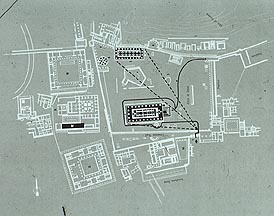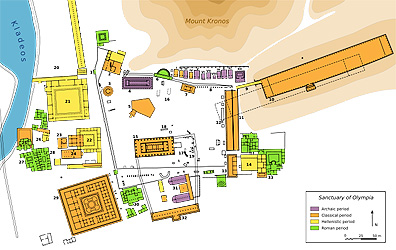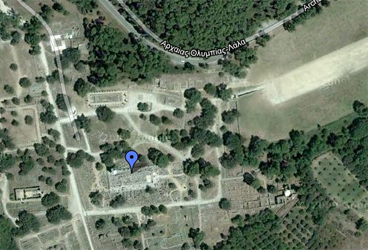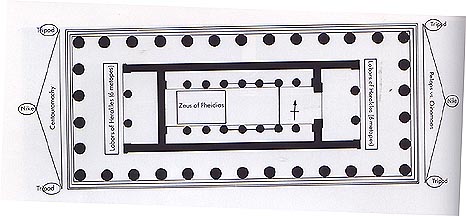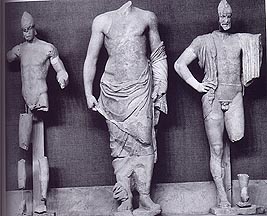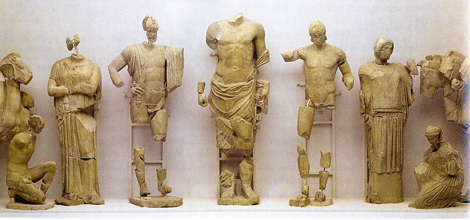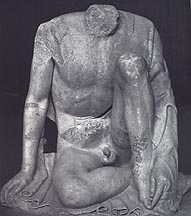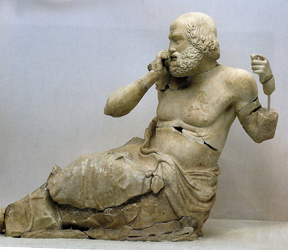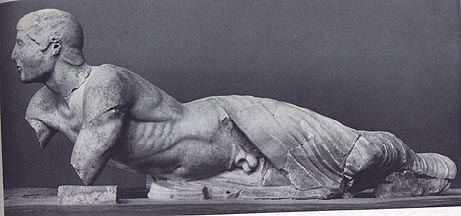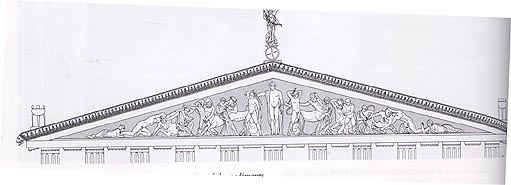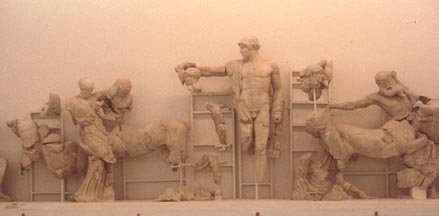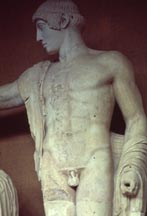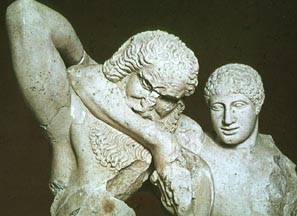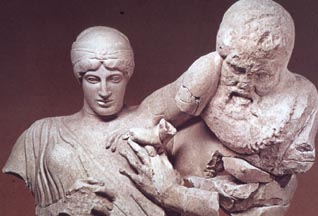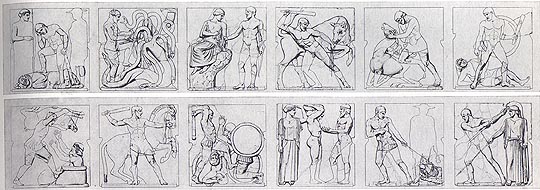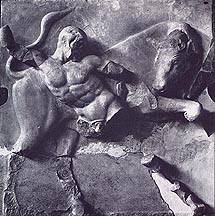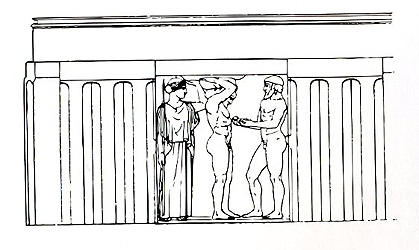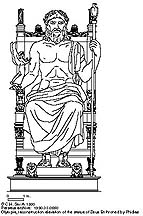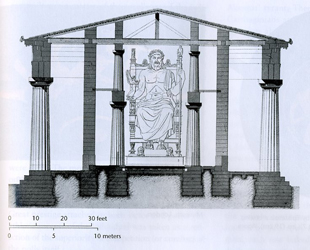ARTH Courses | ARTH 209 Assignments
Temple of Zeus at Olympia
Explore the webpages developed in the Perseus Project examining the Olympics. Especially pay attention to the examination of the site. Take the Tour of Ancient Olympia.
Site plan of Olympia with the Temples of Zeus and Hera emphasized in black.
Google Earth View of Olympia
Temple of Hera II at Paestum, c. 450. The Temple of Zeus is now destroyed, but the Temple of Hera II at Paestum gives us a sense of the proportions of the Olympia temple. The Temple of Zeus was designed by Libon of Elis. Archaeologists have demonstrated that he employed a scheme of proportions. The height columns is 32' (Peloponnesian foot= 32.6 cm=12.75"). The interaxial measurements of the columns is 16'. The distance between the centers of triglyphs is 8'. The width of the abacus of the Doric capital is also 8'. It is evident that Libon based the proportions on a geometric progression: 1, 2, 4, 8, 16, 32.
Plan and Sculptural Program of the Temple of Zeus at Olympia: the temple was begun around 470. The construction was funded by the spoils of a local war between Elis and Pisa, whose defeat and destruction occurred about 470 B.C. The temple was apparently completed by 457 when a golden tripod was dedicated by the Spartans on the peak of the gable after their defeat of Athens in the battle of Tanagra in that year.
East Pediment Reconstruction: Oath of Pelops and Oinomaos before their Chariot Race. The artists represent the moment of krisis (relate to our word "crisis") which in Greek tragedy is that moment of suspense before the outcome has been resolved. Relate the tension here to what we saw last week in the vase paintings of Exekias.
East Pediment: Pelops on left, Zeus in center, and Oinomaos on right.
Most recent reconstruction of the east pediment. Note the reversal of the Oinomaos and Pelops figures.
East Pediment: seated boy.
East Pediment: Seer
East Pediment: River God Cladeos.
West Pediment: Battle of Lapiths and Centaurs.
West Pediment
Detail of Apollo in the center of the west pediment.
Detail of Lapith and Centaur.
Detail of Lapith and Centaur.
Metopes: the Labors of Herakles
Explore the website dedicated to Hercules that is part of the Perseus Project.
Reconstruction of the 12 metopes showing the labors of Herakles from the pronaos and the opisthodomos. Metopes from the West end: top row left to right: 1)Herakles Kills the Nemean Lion;2) Herakles Battles the Lernean Hydra; 3) Herakles brings the Stymphalian Birds to Athena; 4) Herakles Captures the Cretan Bull; 5) Herakles Tames the Keryneian Hind; 6) Herakles Kills the Amazon Queen Hippolyte; Metopes from the East end: Bottom row left to right: 7) Herakles with the Erymanthian Boar; 8) Herakles with one of the Mares of Diomedes; 9) Herakles Kills Geryon; 10) Herakles and the Golden Apples of the Hesperides; 11) Herakles and Kerberos; 12) Herakles Cleans the Augean Stables.
Herakles Cleaning the Augean Stables
(The Augean Stables in Elis housed huge herds of cattle, whose dung had not been cleared for thirty years. Herakles wagered Eurystheus, king of Tiryns, that he could clean the stables in a single day. He made two holes in the stable walls, through which he diverted the River Alpheios.
Herakles and the Cretan Bull
Herakles aided by Athena holding up the heavens while Atlas fetches the golden apples.
Reconstruction of the entablature with the metope of Herakles fetching the Golden Apples/
The Chryselephantine Statue of Zeus by Phidias
The sculptural programme of the Temple of Zeus was completed by the addition of the monumental statue of the enthroned Zeus holding a Nike figure made by Phidias. The statue like the apparently earlier Athena Parthenos in the Parthenon also made by Phidias was a chryselephantine statue made of gold and ivory.
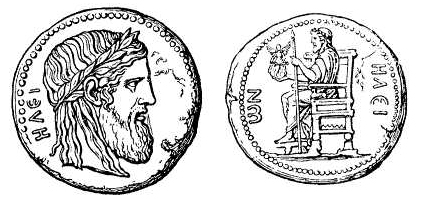
A coin from Ellis showing the statue of Zeus.
Cross section of the Temple of Zeus.
